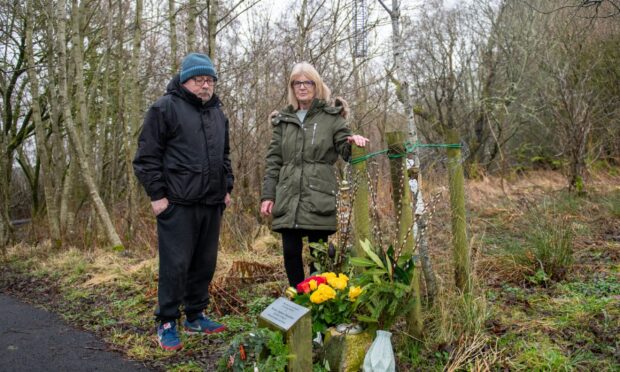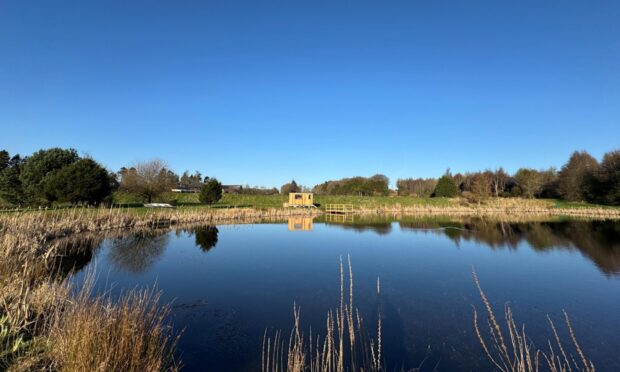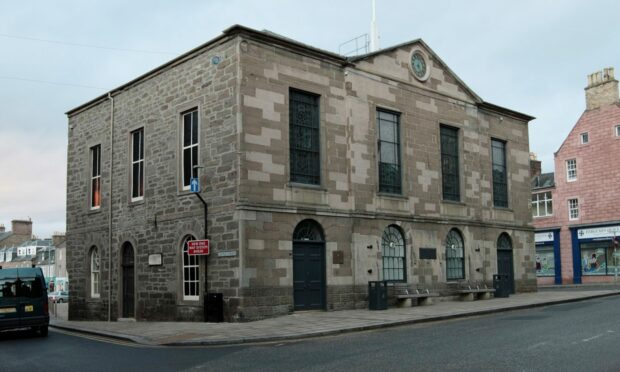A Tayside castle’s link to Shakespeare’s Macbeth has been promoted with a new sculpture trail inspired by the play.
Seven elements from The Scottish Play have been made into large wooden sculptures in woods at Glamis Castle.
It is thought that King James VI of Scotland’s visits to Glamis may have inspired the playwright to write Macbeth at the start of the 17th century.
The sculptures show the three witches, King Duncan, Banquo, Lady Macbeth and Macduff as well as two scenes of Macbeth.
The idea of the trail was thought up by head gardener Des Cotton and castle manager Tommy Baxter.
Tommy said: “We were talking about how we could encourage people to come into the pinetum because it’s so beautiful and people don’t come through here very often.
“The head gardener said ‘Why don’t we get some wooden sculptures made?’ and I thought ‘Why don’t we have something associated with Glamis – characters from Macbeth?’
“The sculptures are all made from trees which have blown down over the years.”
Des added: “We are hoping that the sculptures will last for at least 20 years. The sculptures are all made from conifers apart from the witches that are made out of oak.”
The sculptures were created by Rob Neith-Nicholson and Kim Neith-Thompson of Neith Art and Sculpture, with each taking between 20 and 25 hours to create.
Rob explained: “We attack the wood with chainsaws, axes, knives, chisels anything that will get it to out final vision. We start off with a huge chainsaw and use little knives and chisels for the details.
“We also took a blow torch to the sculture for the burnt effect which gives it a more three dimensional effect.”
Kim added: “We had quite a lot of challenges with the Macbeth sculpture. We did wonder if it was cursed at one point.
“We lost a few fingers through cracks in the wood but we were able to rectify it and I think it actually turned out better than the original plans.
“I’ve always been a fan of the Shakespeare plays so it was great to get the commission.
“We visited the property last September and that’s when all the research and work began. We’re really pleased with how it looks. It’s an amazing setting for it.”
The trail was also praised by Lord Strathmore who said: “The pinetum used to be a bit of a jungle 20 years ago and my father and my brothers and I did a lot of work to make it looking good.
“It’s great to have the link to Macbeth and I’m very pleased with how it has turned out.”
The Scottish Play
King James VI of Scotland had befriended the 9th Lord Glamis and often visited the Castle.
In 1603 Lord Glamis accompanied him to England where he had united the two crowns, becoming King James I of England and Ireland.
At the time King James was a patron of Shakespeare’s acting company and it is possible that Shakespeare heard stories about Glamis and his imagination was fired.
In addition, the story of Macbeth being thane of Glamis could have been adopted by Shakespeare from the history of Hector Boece, the translation of which by Bellenden was the popular and acknowledged history of Scotland in the time of Shakespeare.
The slaying of King Duncan by Macbeth in fact took place at Elgin, not Glamis.
Macbeth was first performed in 1606.









